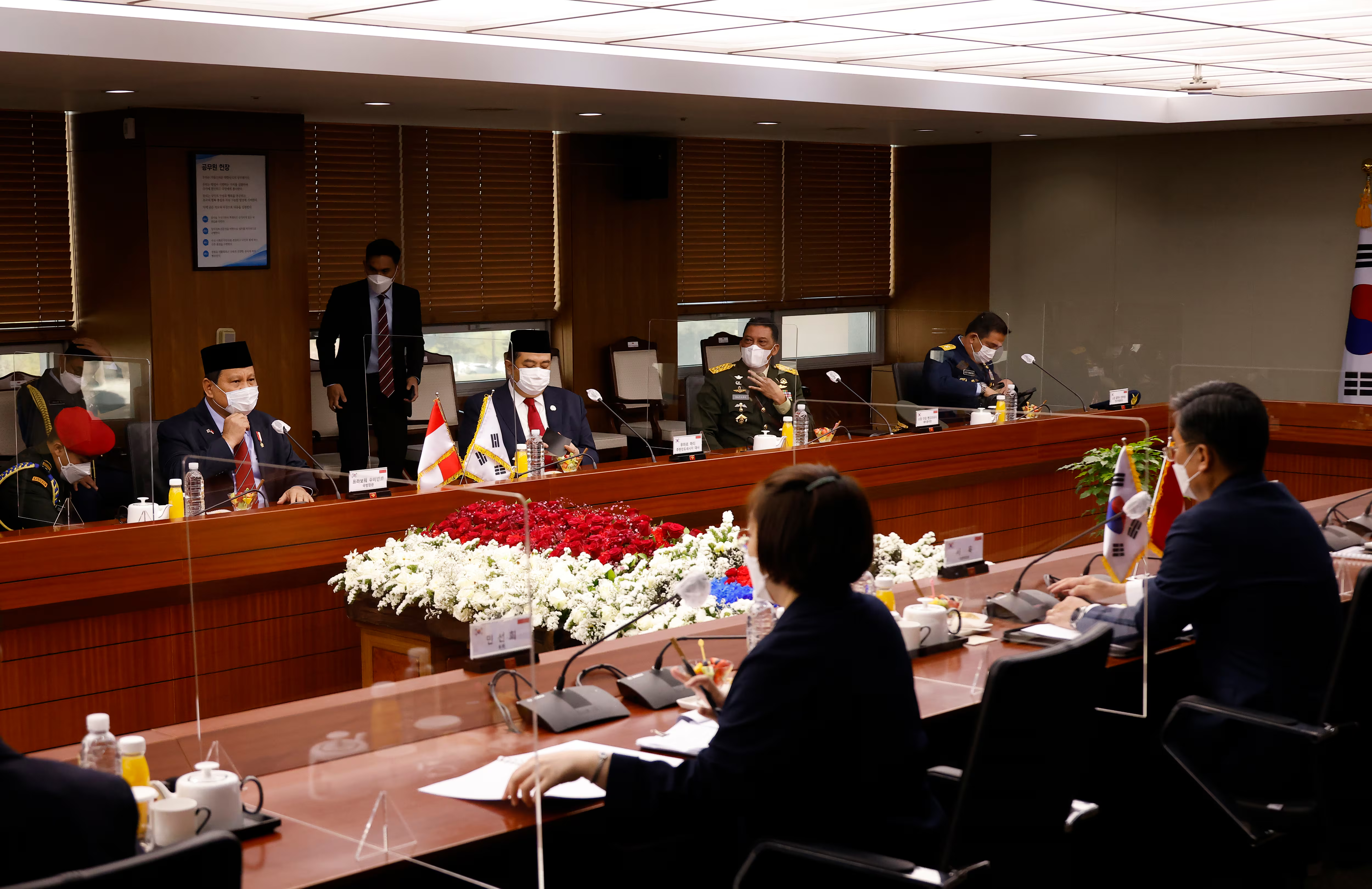SEOUL — Korea Aerospace Industries unveiled April 9 South Korea’s first homegrown fighter jet prototype, representing a major boost for the country’s self-reliant defense capability, five years after the KF-X program began.
The prototype of the twin-engine jet, named the KF-21 Boramae, was showcased during a rollout ceremony at the headquarters of KAI in Sacheon, about 440 kilometers south of Seoul.
“We’ve got our own supersonic fighter jet finally,” President Moon Jae-in said in a speech. “We have opened a new era of self-defense and established a historic milestone for the development of the aviation industry.”
The president said 40 KF-21s will be delivered to the Air Force by 2028 and 80 more jets will enter service by 2032.

The KF-21 is considered a 4.5-generation aircraft, on par with the latest F-16 and less stealthy than the fifth-generation F-35 Lightning II developed by Lockheed Martin. The fighter jet is to replace the aging fleet of the Vietnam War-era F-4E Phantoms and F-5E Tigers.
KAI said the plane will undergo ground testing this year before its maiden flight scheduled for July next year. Mass production of the KF-21 Block I will begin when six prototypes complete 2,200 sorties over the next four years, according to the company. Nearly $8 billion is to be spent for the KF-21 development between 2015 and 2028 under the KF-X project.
Around 65 percent of the jet’s components are under production locally. Among the components built by South Korean developers are the active electronically scanned array radar; the electronic warfare suite; the infrared search-and-track pod; and the electro-optical targeting pod, according to the Defense Acquisition Program Administration.
With a maximum takeoff weight of 25,600 kilograms, the up-to-date plane is to have 10 pods for air-to-air missiles and other armaments. It can fly as fast as Mach 1.8 with a cruising distance of 2,900 kilometers. The jet is powered by two F414 engines developed by General Electric.
The KF-X AESA radar was rolled out in August 2020. According to Hanwha Systems, the radar has a module of about 1,088 transmitter receivers, with a beam-steering angle of 60-70 degrees. The number of transmitter receivers is to ultimately increase to about 1,300.

The prototype’s rollout was on schedule, but there are risks that still must be addressed.
Indonesia might still pull out from the KF-X program. As a sole international partner of the KF-X project, Indonesia is obliged to pay 20 percent of the development costs under a 2016 deal. Indonesia is supposed to acquire up to 48 jets (called IF-X in Indonesia) and receive the transfer of fighter jet technologies.
However, the Southeast Asian nation has been short of fulfilling its promise, only paying some 13 percent of its financial commitment. Jakarta cited domestic budgetary constraints and has reportedly asked to renegotiate the terms of deals on the KF-X/IF-X with a focus on boosting the technology transfer from South Korea.
Indonesian Defense Minister Prabowo Subianto attended the KF-21 rollout ceremony following meetings with his South Korean counterpart Suh Wook and President Moon a day earlier. But the sides reportedly failed to address the backlog issue during the meetings.

Besides the issue of partnership, the KF-21 would likely face technological challenges, according to observers.
One of the thorniest issues is the development of an indigenous long-range air-to-ground missile to be integrated into the KF-21 Block II, meant for deployment by 2032.
Under a 2018 deal, the state-funded Agency for Defense Development was spearheading the project to develop the country’s own standoff, air-launched cruise missile, or ALCM. But the research has been on hold, as the DAPA prefers an ALCM project led by a defense company over one led by the state research organization.
Against this backdrop, Hanwha Corporation, LIG Nex1 and KAI have shown interest in the ALCM development in partnership with foreign missile makers, but it remains unclear if the locally built weapon could be developed before the deployment of the Block I planes by 2028.
“It takes about 15 years to develop an ALCM with a range of hundreds of kilometers, and due to the technical difficulties, most advanced countries conduct joint research and development on the ALCM,” said Kim Jong-ha, a security expert at Hannam University in Daejeon.
Taurus Systems has offered an option to equip the KF-21 Block I with the Taurus KEPD 350 ALCM, and the Block II with the smaller KEPD 350K-2 variant.
Much attention has been given to the homegrown AESA radar, which experts see as key to the success of KF-X program.
“Even if the hardware development succeeds, developing AESA software and integrating it into the hardware is a different story,” a retired South Korean Air Force commander told Defense News on condition of anonymity. “There are certain risks down the road.”
Brian Kim was a South Korea correspondent for Defense News.








